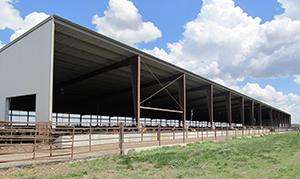Educational Curricula | Tools for Farmers | Regulations | Archived Webinars & Videos | Self-Learning Lessons | Mono-slope Barns (New) | Research Summaries
Educational Curricula
These materials are suitable for widespread use, but were developed especially to assist educators in their classrooms and educational programs. These include fact sheets suitable for handouts. Additional materials vary by topic but may include archived webinars, videos, technology summaries, photos, or presentation slides.
| Introducing the Issues | |||
|---|---|---|---|
| Atmospheric Ammonia | Dust (Particulate Matter) | Regulations | Odors |
| Health Impacts | Hydrogen Sulfide | ||
| Measuring Air Emissions | |||
| Introduction to Measurement | Hydrogen Sulfide | Particulate Matter | Odors |
| Bioaerosols | |||
| Managing Air Emissions | |||
| Ammonia | Airborne Emissions | Manure and Litter Additives | Manure Storage Covers |
| Biofilters | Wet Scrubbers | Dust (Particulate Matter) | Diet & Feed Management |
| Odors and Setbacks | |||
Tools For Farmers
National Air Quality Site Assessment Tool (NAQSAT) – a confidential, non-quantitative way to look at different management practices and see what impacts those changes are likely to have on the gases and odors emitted from your farm. Related: NAQSAT for swine and poultry | beef and dairy
Feedlot Air Emissions Treatment Cost Calculator – a spreadsheet for calculating the costs of various technologies that reduce odors and air emissions from your farm
Regulations
-
- Resources for Policy Makers (Video)
- Mandatory Greenhouse Gas Emissions Reporting for Animal Agriculture
- National Air Emissions Monitoring Study (NAEMS) – About the study and selected results (2011) | 2008 webinar about the study and consent agreement
Archived Webinars and Videos
These webinars are one-hour total although all have separate segments that average 15 minutes. The speakers are national experts on the topic presented. Archives also include links to download each segment and presentation slides. The videos are shorter (5-13 minutes) include national experts as well as producer perspectives.
National Air Emissions Monitoring Study (NAEMS)
This project concluded in 2010 and represents the largest coordinated effort to ever measure air emissions from animal facilities.
 Mono-Slope Barns
Mono-Slope Barns
Mono-slope and other types of bedded beef barns are a relatively new housing system becoming popular in the upper Midwest for a variety of reasons–mostly driven by water quality concerns. What are the air emissions from these barns and how does that compare with what we know about traditional open lots? A recently-completed tri-state research project examined these questions. More…
-
- Air Quality in Mono-Slope Bedded Beef Barns (PDF, 8 pages)
- Research Results (recorded presentations)
- Virtual tours by producers with different types of barns: Hoop buildings | Narrow & wide mono-slope | Slatted floor
Self-Learning Lessons
Conference and Workshop Summaries
Research Summaries
-
- Orienting Buildings Perpendicular to Prevailing Winds May Reduce Odors
- Air Quality/Emission and Energy Usage Impacts of No Pit Fans in a Wean to Finish Deep Pit Pig Facility
- Determining Ammonia and Particulate Matter Emissions from Midwest Turkey Grow-Out Buildings
- Diet Modification to Reduce Odors, Gas Emissions and Nutrient Excretions from Swine Operations
- Odor Emissions and Chemical Analysis of Odorous Compounds from Animal Buildings
- Odor Mitigation Using Vegetative Environmental Buffers
- Partial Biofiltration of Hybrid Ventilated Swine Facilities
- Protocol for Determining the Cost/Benefit of a Manure Storage Lagoon Cover
- Simultaneous Treatment of Odor, VOCs, H2S, NH3, and Pathogens With UV Light
- Siting Swine Facilities Using Iowa State’s Community Assessment Model
Acknowledgements
This information was originally developed by the Air Quality Education in Animal Agriculture (AQEAA) project. This team included more than 50 individuals from across the country with expertise in many aspects of air quality and animal agriculture. These materials were produced with financial support from the National Research Initiative Competitive Grant 2007-55112-17856 from the USDA National Institute of Food and Agriculture. For more information about the project or materials on this page contact Dr. Rick Stowell rstowell2@unl.edu.


